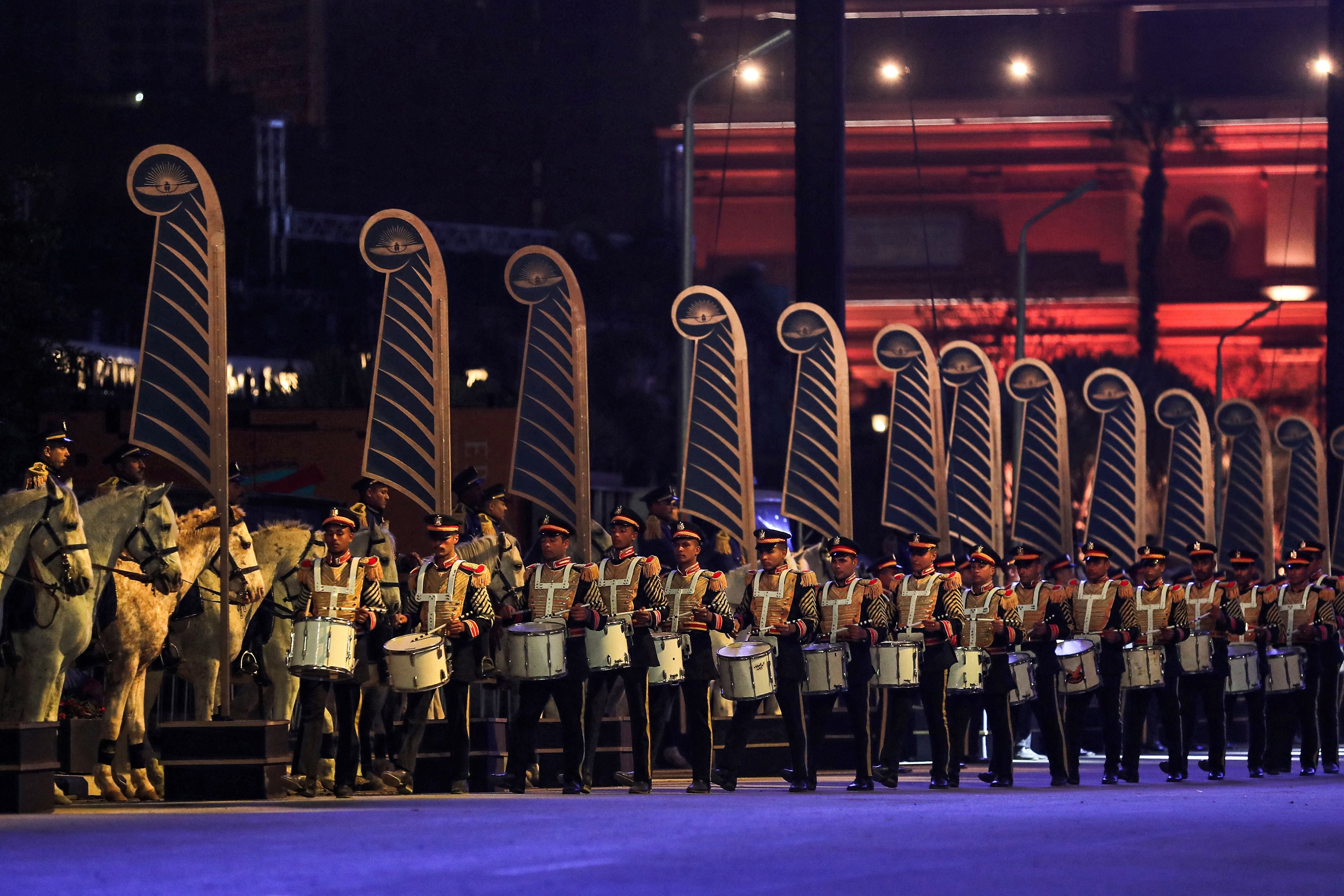Egyptian mummies paraded through Cairo on way to new museum
Grand event sees 22 sarcophagi transported in special capsules filled with nitrogen to ensure their protection
Your support helps us to tell the story
From reproductive rights to climate change to Big Tech, The Independent is on the ground when the story is developing. Whether it's investigating the financials of Elon Musk's pro-Trump PAC or producing our latest documentary, 'The A Word', which shines a light on the American women fighting for reproductive rights, we know how important it is to parse out the facts from the messaging.
At such a critical moment in US history, we need reporters on the ground. Your donation allows us to keep sending journalists to speak to both sides of the story.
The Independent is trusted by Americans across the entire political spectrum. And unlike many other quality news outlets, we choose not to lock Americans out of our reporting and analysis with paywalls. We believe quality journalism should be available to everyone, paid for by those who can afford it.
Your support makes all the difference.Nearly two dozen ancient Egyptian royal mummies were paraded through Cairo on Saturday evening in a dazzling display to mark their transferral to a new museum.
Major roads along the Nile were shut down as the 22 royal mummies were carried across Egypt’s capital from the Egyptian Museum in central Cairo’s Tahrir Square to the National Museum of Egypt Civilisation in Fustat, a roughly 7km journey.
In video captured by Reuters, drummers could be seen lining the streets, hailing the passage of the 18 kings and four queens, most from the New Kingdom.
The royal mummies were transported in special capsules filled with nitrogen to ensure their protection.
As they arrived at their new home, cannons were fired in a 21-gun salute.
Read more:
Egypt’s president, Abdel Fattah al-Sisi, was present at the event and could be seen standing by as the mummies were driven up to the museum on vehicles decorated with golden pharaonic motifs.
The heads of the United Nations cultural agency Unesco and the World Tourism Organisation were also present at the ceremony.
The grand parade was largely held in a bid to attract worldwide attention to Egypt’s rich ancient artifacts, with the country being among many to suffer a major blow to its tourism industry due to the coronavirus pandemic.

Egyptian archaeologist Zahi Hawass said the ancient royal mummies would be displayed in a “civilised manner” rather than for “amusement” in their new home.
“We chose the Civilisation Museum because we want, for the first time, to display the mummies in a civilised manner, an educated manner, and not for amusement as they were in the Egyptian Museum,” Mr Hawass said.
The mummies had been discovered in the mortuary temples of Deir Al Bahari in Luxor and at the Valley of Kings as far back as 1871.

Seqenenre Tao, who served as the last king of the 17th Dynasty, is among the royals whose mummified remains will be put on display, along with those of Ramses II, Ahmose-Nefertari and Seti I.
Salima Ikram, an Egyptologist at the American University in Cairo, said that by holding the grand parade “with great pomp and circumstance”, the ancient royals were “getting their due”.
“These are the kings of Egypt, these are the pharaohs. And so, it is a way of showing respect,” the expert said.
Additional reporting by Reuters

Join our commenting forum
Join thought-provoking conversations, follow other Independent readers and see their replies
Comments